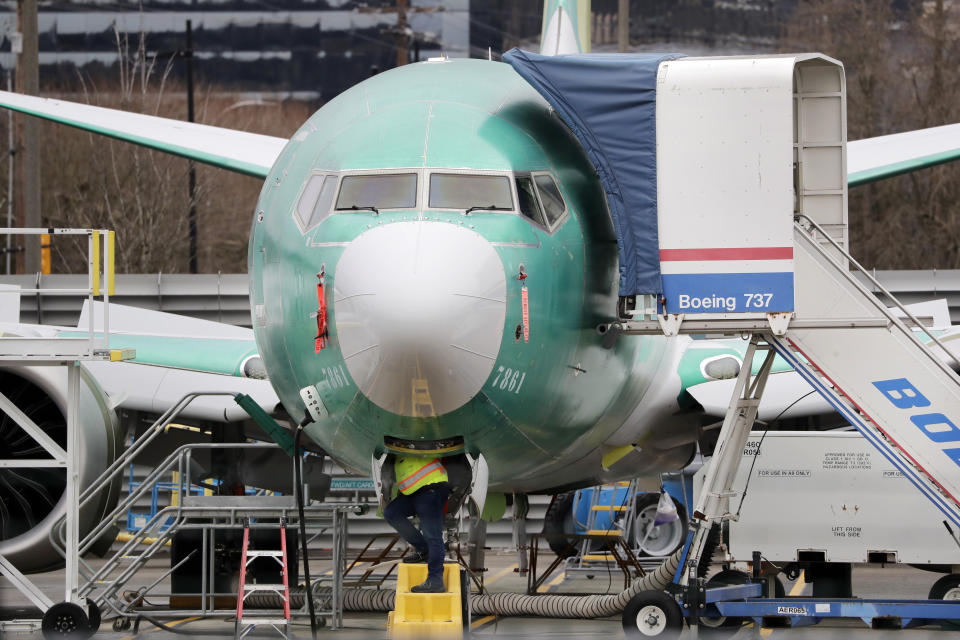The labor slowdown we might be missing: Morning Brief
Friday, January 10, 2020
Get the Morning Brief sent directly to your inbox every Monday to Friday by 6:30 a.m. ET. Subscribe
A data quirk is artificially adding jobs to the economy
The December jobs report is set for release at 8:30 a.m. ET.
Wall Street expectations are for this data to show the U.S. labor market finished 2019 with another solid month. Nonfarm payrolls are forecast to grow by 160,000 and the unemployment rate should hold steady at a 50-year low of 3.5%.
But economists at UBS warn that we might be overlooking a “bias” in the Bureau of Labor Statistics’ method for calculating the jobs data that has added some potentially artificial strength to the U.S. labor market.
“We strongly believe the BLS's treatment of closing establishments is substantially biasing payrolls up,” the firm wrote in a note to clients published last week.
“The BLS assumes that for every establishment in their sample that closes, a new establishment opens unobserved. The BLS then increases its estimate of new jobs in line with payroll growth at similar surviving establishments. This methodology caused a near-record benchmark revision last year; the BLS subtracted over 500k workers from reported employment.”
In August, the BLS released its preliminary benchmark revision, which subtracted 501,000 jobs from the economy as of March 2019. And while this doesn’t mean that the economy “lost” 501,000 jobs in March instead of the initially reported 196,000 jobs added that month, it does mean the civilian labor force had 501,000 fewer members than previously estimated. In February, a final revision to this data will be released.
The upshot for Friday’s jobs report and the current state of the labor market, in UBS’ view, is that the current slowdown in hiring is more pronounced than being currently indicated by monthly jobs data.
“The current bias is likely larger than for a ‘normal’ slowdown because tariffs hit firms differentially,” UBS adds. “Firms with the greatest exposure close; firms with the least exposure likely expand modestly, absorbing some, but not all, of the closing firms’ workers. Employment is a key near-term indicator. But to take proper signal from employment, one must understand the bias in the numbers.”
Of course, UBS factors in a slight upward “bias” to its expectations for this morning’s jobs report, and is calling for job gains to total 160,000 in December with the unemployment rate ticking higher to 3.6%. The firm sees underlying job growth, however, closer to 90,000 in December.

Lew Alexander and the economics team at Nomura also see recent jobs market data as overstating the health of the labor market.
“The upside surprise in November was driven by certain private service industries including healthcare and social assistance, leisure and hospitality and information,” Nomura wrote in a note to clients on Wednesday. “Some of these large increases are likely to revert in December.”
In November, the U.S. economy added 266,000 jobs, topping expectations by 86,000; 40,000 jobs in November were added because of the end of the General Motors (GM) strike which had subtracted some 43,000 jobs from the October data.
Alexander adds that, “we have not seen a material improvement in many business survey hiring measures that would typically accompany a sustained acceleration in employment growth. [...] Excluding business surveys, growth in job openings has slowed after a surge due to fiscal stimulus in 2018. This all suggests that the downward trend of employment growth remains intact.”
Markets, for their part, have spent the last several months pricing in better economic and earnings growth in 2020. And as far back as November, it became clear the market was canceling what at one point had seemed to be an imminent U.S. recession.
This market pricing, however, doesn’t change the fact that the U.S. labor market appears to be slowing. And slowing at a pace that may even be understated by recent data and underreported later this morning.
By Myles Udland, reporter and co-anchor of The Final Round. Follow him @MylesUdland
What to watch today
Economy
8:30 a.m. ET: Department of Labor Employment Situation for December
Change in non-farm payrolls (+160,000 expected, +266,000 in November)
Unemployment rate (3.5% expected, 3.5% in November)
Average hourly earnings, month on month (+0.3% expected, +0.2% in November)
Average hourly earnings, year on year (3.1% expected, 3.1% in November)
10 a.m. ET: Wholesale inventories month on month, November final (0.0% expected, 0.0% prior)
Top News

Boeing papers show employees slid 737 Max problems past FAA [Associated Press]
El-Erian: A 'Phase 2' trade deal will be hard to come by [Yahoo Finance]
Iran calls on West to prove claims Boeing jet was shot down [Bloomberg]
YAHOO FINANCE HIGHLIGHTS
Key takeaways on the global economy from Gundlach's roundtable at DoubleLine
Barbara Corcoran on Tesla CEO Elon Musk: ‘That guy is a winner’
Democrats receive record number of campaign contributions in 2019
Follow Yahoo Finance on Twitter, Facebook, Instagram, Flipboard, SmartNews, LinkedIn, YouTube, and reddit.

 Yahoo Finance
Yahoo Finance 

